This comprehensive guide unveils the must-see Vietnam tourist places, catering to every travel style and interest.
Vietnam, a Southeast Asian country, is well-known for many reasons, among which, sadly, some people remember Vietnam for war. However, there are so many things to see in Vietnam, the country offers a variety of culture with 54 ethnic peoples having different customs and dress, the richness of natural beauty: from limestone mountains, rice terraces to the plains to the delta of rivers, from mysterious caves to beautiful beaches on the sea coast, from tropical forests to sand dunes,...
With a length of 1750 km, Vietnam includes three regions: North, Central, and South. Each region has a different climate and lifestyle. Therefore, if you are looking for a destination with many experiences, Vietnam is a good choice. In this article, we present the most beautiful Vietnam tourist places to visit so that you will have an idea to choose the experiences that suit your taste.
Tourist Places in Northern Vietnam
1. Hanoi
Being the capital of the country, Hanoi is an important economic and cultural centre.
Why Hanoi?
There are so many reasons why Hanoi is one of the best tourist places in Vietnam.
- The richness of history: Hanoi is one of the oldest cities in the world. Over the centuries, this place has been influenced by European and Asian cultures. But you don't feel too much opposition between them but a nice cultural mix.
- The particular architecture: the houses and buildings have a mixed architecture between Western and Indochina.
- The Culinary Quintessence: Hanoi has long been known for its rich cuisine. Visitors can find street restaurants, stalls selling good food, and colourful tropical fruits in small markets.
- Unique charm in each month: Each month in Hanoi, we have typical kinds of flowers, and you can see the change of weather through the street vendors' bicycles full of flowers along the streets: Peach blossom in January, white lily in April, lotus in June, chamomiles in November,... With 4 distinct seasons, Hanoi has so many colours to discover.
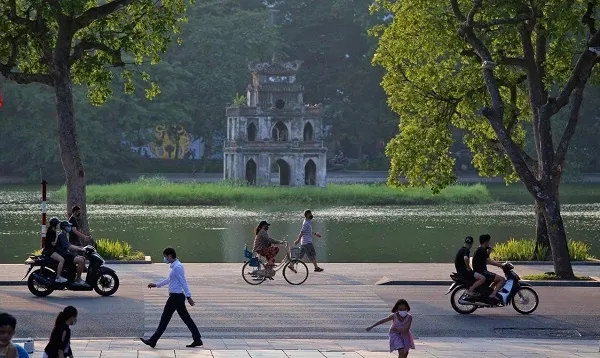
Hoan Kiem Lake - a popular tourist attraction
When to go?
You can go to Hanoi at any time of the year.
Where to go?
- The Temple of Literature
- Ho Chi Minh Mausoleum
- Museums: Hoa Lo Prison, Ethnographic Museum,...
- Pagoda: Tran Quoc, Quan Su
- Temples: Bach Ma, Quan Thanh, Ngoc Son
- Old Quarter and French Quarter
>> See more: Hanoi Travel Guide
2. Ninh Binh
Ninh Binh is located in the North of Vietnam. This is a favourite destination for both domestic and international travelers.
Why Ninh Binh?
Ninh Binh is a place that nature favours so much with everything: a national park, mountains and limestone rocks, the system of rivers among the rocks and endless rice fields,... Ninh Bình is also known as the capital of Vietnam in the 10th century, for those who love history, Hoa Lu is a must-see place if you want to know more about the patriotic tradition of Vietnamese.
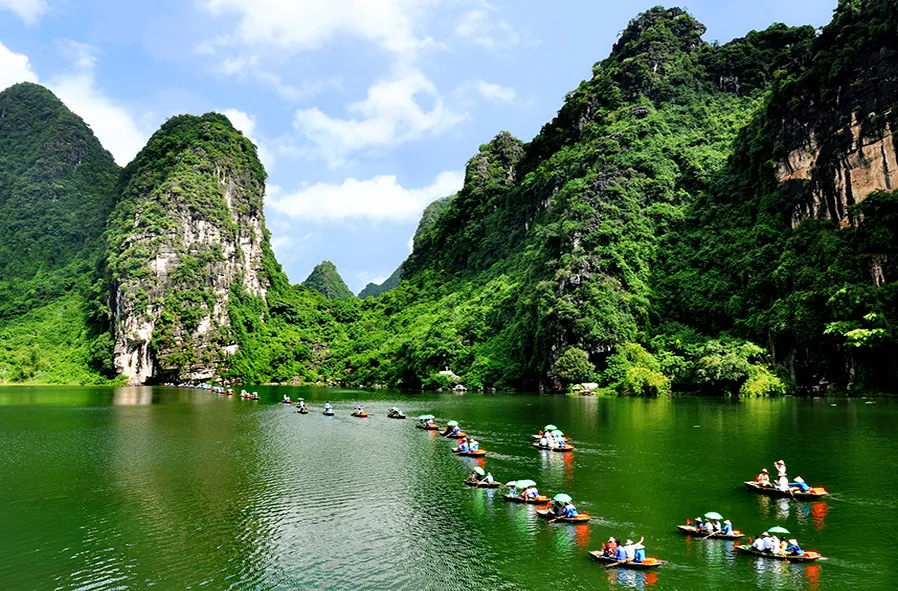
Trang An - a popular tourist attraction
When to go?
You can visit Ninh Binh almost all year round. However, in April and May, the rice fields in Ninh Binh are all yellow and you can acquire a magnificent view.
Where to go?
- Tam Coc
- Trang An
- Van Long
- Rural villages
- Bich Dong Pagoda
- Bai Dinh Pagoda
- Hang Mua
>> See more: Ninh Binh Travel Guide
3. Mai Chau
Mai Chau is a village in the northwestern area located at a distance of 140 km from Hanoi.

Tranquility at Mai Chau
Why Mai Chau?
- The charm of tranquillity: In Mai Chau, you will find a vast valley extending to the foot of the mountain, completely different from the hustle and bustle life of the city.
- Culture and typical life of the Thai ethnic group: Mai Chau is home to 6 ethnic groups, of which white Thais make up more than 65% of the population.
- Ethnic Thai cuisine: You have to taste the dishes of freshwater fish, roasted chicken with Thai spices, bamboo shoots, and sticky rice cooked in bamboo. The Thais have a special wine that they drink together in a jar with straws. It was so delicious!
When to go?
Autumn (August to October) is the most beautiful time to travel to Mai Chau with golden autumn sunshine and green rice fields gradually turning golden. In higher areas such as Hang Kia, Pa Co, there is a cloud chasing season from November to April.
Where to go?
The great ethnic villages to visit are Lac Village, Pom Coong Village, Van Village, and Nhot Village. You can also visit Cha Long and Tong Dau villages.
>> See more: Mai Chau Travel Guide
4. Mu Cang Chai
Mu Cang Chai is a district in Yen Bai province in northwestern Vietnam, 315 km from Hanoi.
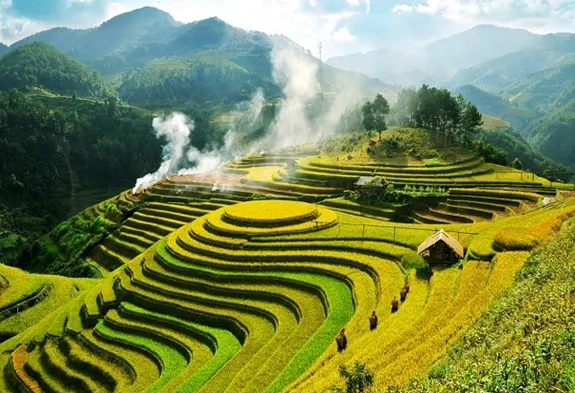
Mu Cang Chai terraced rice field - a popular tourist attraction
Why Mu Cang Chai?
The charming rice terraces: The beautiful terraced fields of Mu Cang Chai are meticulously "carved" by the skilled hands of ethnic people.
The colourful culture of ethnic Hmong people: The ethnic people living in Mu Cang Chai are mainly the Hmong.
When to go?
In summer, people sow rice, and then all the hills are covered with lush greenery. In early autumn, the rice plants turn a beautiful golden colour to prepare for harvest. The ripe rice season is considered the most beautiful season in Mu Cang Chai. Everywhere, there is bright and fresh yellow colour to adorn the peaceful beauty of the mountainous region.
Where to go?
The famous terraced fields of Mu Cang Chai that you can add to your plan are Che Cu Nha, La Pan Tan, De Xu Phinh, Tu Le,…
>> See more: Mu Cang Chai Travel Guide
5. Sapa - Bac Ha
Located at an altitude of over 1600m and covered by forest, beautiful natural sceneries, a cool climate and many delicious dishes are the reasons why Sapa tourism has become attractive for both domestic and foreign tourists.
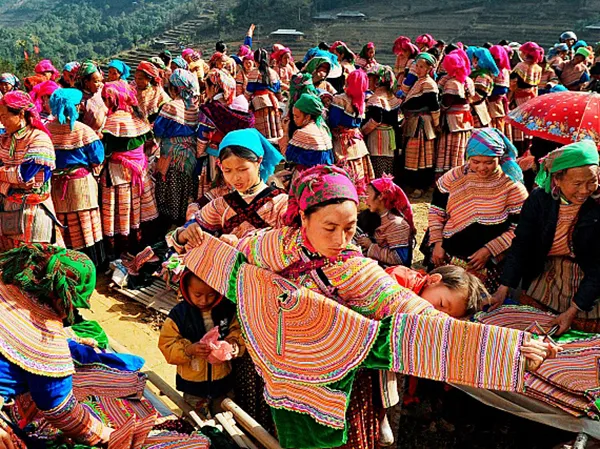
Bac Ha Market - a unique tourist attraction
Why Sapa and Bac Ha?
- The temperate climate: Sapa has not too cold springs, cool summers, cold autumns and freezing winters. In the summer, it is an ideal destination to escape from the sultry heat with a temperature of only 25oC.
- Ethnic cultural diversity: In Sapa, there are many ethnic minorities: Hmong, Red Dzao, Giay, Kinh, Xa Pho… so visitors can come here to discover different cultural customs.
- Fansipan Peak: The main reason for many people to travel to Sapa is to conquer Fansipan peak. In some years, you may encounter difficulty when conquering the "roof of Indochina''.
- Multi-ethnic markets in Bac Ha: the markets are fascinating for all travellers who seek to experience a local life.
When to go?
April and May are the time when the locals start sowing and planting rice so if you come to Sapa during this time, you will see the water flowing through the rice terraces. The period from June to September is the ideal time for those who want to escape the scorching and sultry heat of the city, looking for a cooler and more pleasant place. From June to July, Sapa is filled with greenery, fresh green forest and growing rice terraces, while from August to September, Sapa is surrounded by picturesque yellow terraces. October to November is the water season in Sapa so it is time to visit waterfalls.
Where to go?
- The ethnic villages: Y Linh Ho, Lao Chai, Ta Van, Giang Ta Chai, Ban Khoang, Ta Giang Phinh
- The waterfalls: Love waterfall, Silver waterfall, Fairy waterfall
- Ethnic markets in Bac Ha: Bac Ha market (on Sunday morning), Can Cau market (on Saturday morning), Coc Ly market (on Tuesday morning), Xin Cheng market (on Wednesday morning) are the most famous in Bac Ha. Xin Cheng market is the smallest and most authentic.
>> See more: Sapa Travel Guide
6. Ha Giang
Ha Giang has a diverse landscape of rivers and mountains. If you want to see the flowers, admire the rice fields, chase the clouds, conquer the past and explore the culture,… you will find all of them with a Ha Giang trip.
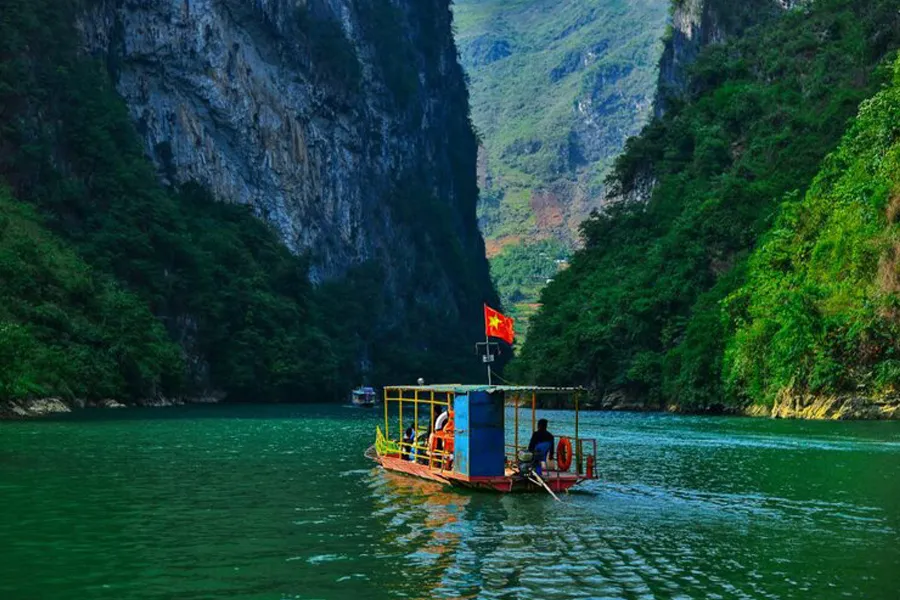
Tu San canyon, Nho Que river - popular tourist attractions
Why Ha Giang?
- The fabulous scenery: Ha Giang has many different and beautiful attractions that you can experience, from the majestic roads, canyons, karst plateaus,...
- Distinctive architecture: In Ha Giang, we can see the mixed architecture of the Chinese, ethnic Vietnamese and French.
When to go?
In spring, Ha Giang is brilliant, with not-too-cold weather and flowers blooming everywhere. In summer, the sun was a bit harsher, but that's okay, Ha Giang charms travellers in a different way. If you have the opportunity, don't miss the opportunity to visit Ha Giang in autumn. Diving along the zigzagging roads, sometimes you will be overwhelmed by the bright yellow colour of the terraced fields in the season of ripe rice. Then, Ha Giang in winter is poetic even if it's cold.
Where to go?
- Ma Pi Leng Pass
- The Tu San canyon and Nho Que river
- Hoang Su Phi
- Lung Cu - The northernmost point of Vietnam
- The palace of Hmong King Vuong Chi Sinh
- Dong Van Old Quarter
- The hills of Quan Ba
>> See more: Ha Giang Travel Guide
7. Cao Bang - Bac Kan
Cao Bang and Bac Kan are two provinces in the north of Vietnam. These destinations share may similar natural beauty and ethnic minority culture.
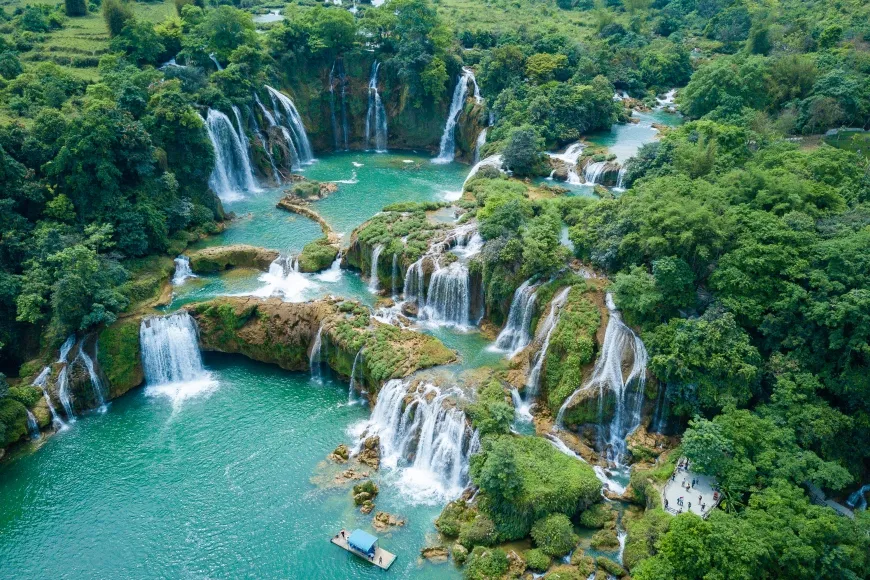
Ban Gioc Waterfall - a popular tourist attraction
Why Cao Bang and Bac Kan?
- Breathtaking wild landscapes: If Ha Giang is the dream destination of nature-oriented travellers with its majestic beauty as bold as sculpture, Cao Bang and Bac Kan bring a very different feeling of mountain villages. They are poetic and gentle but the mountains and rivers are so irresistibly majestic.
- Interact with friendly ethnic people: In Cao Bang there are 28 ethnic minorities living together while Bac Kan is the home to 35 ethnic groups. In both provinces, the Tay minority occupies the majority with as much as 50% of the total population.
- Exquisite cuisine: the taste of mountainous specialities is a highlight of Cao Bang and Bac Kan.
When to go?
The best season to visit Cao Bang and Bac Kan is from August to December.
Where to go?
- Cao Bang
- Lenin stream - Pac Po cave
- Ban Gioc Waterfall
- Nguom Ngao Cave: One of the most beautiful caves in Vietnam, witness for yourself the interesting shape of the stalactite system in the cave.
- Ethnic villages in Bao Lac
- Ba Be
- Ba Be National Park: Ba Be Lake, Puong Caves, Hua Ma, Dau Dang House,...
- Pac Ngoi village
>> See more: Cao Bang Travel Guide
8. Gulf of Tonkin
The Gulf of Tonkin has an area of 123,700 km2, the width of which is approximately 320km at its widest point and approximately 220km at its narrowest point. At the Gulf of Tonkin, you can visit stunning bays, among which the most famous is Halong Bay (in Quang Ninh province), one of the Seven Wonders of the World which has been recognized as a UNESCO World Heritage Site with 2 values: the first time in 1994 for natural aesthetic value, the second time in 2000 for geological and geomorphological value. Now, they are investigating to recognize this bay for the third archaeological and biodiversity value.
In addition, in the Gulf of Tonkin, other attractions are Bai Tu Long Bay (also in Quang Ninh province) and Lan Ha Bay (in Hai Phong), which belongs to the Cat Ba Biosphere Reserve, recognized by UNESCO.
When to go?
The best time to take a Halong Bay cruise is from April to October because the weather is cool. You can participate in various outdoor activities like swimming, sun-bathing. Except on certain days with storms that normally fall in August, you can visit the bays at peace of mind.
Where to go?
Ha Long Bay: Titov beach, Soi Sim beach, Surprise cave, Paradise cave, Dau Go cave
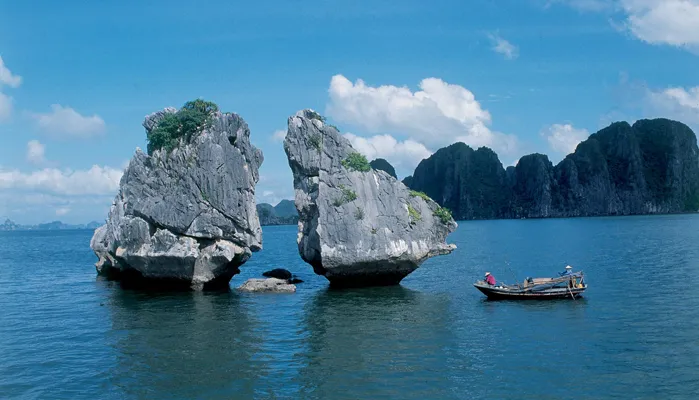
Trong Mai islets - the symbol of Halong Bay
Bai Tu Long Bay: Thien Canh Son beach, Thien Canh Son cave
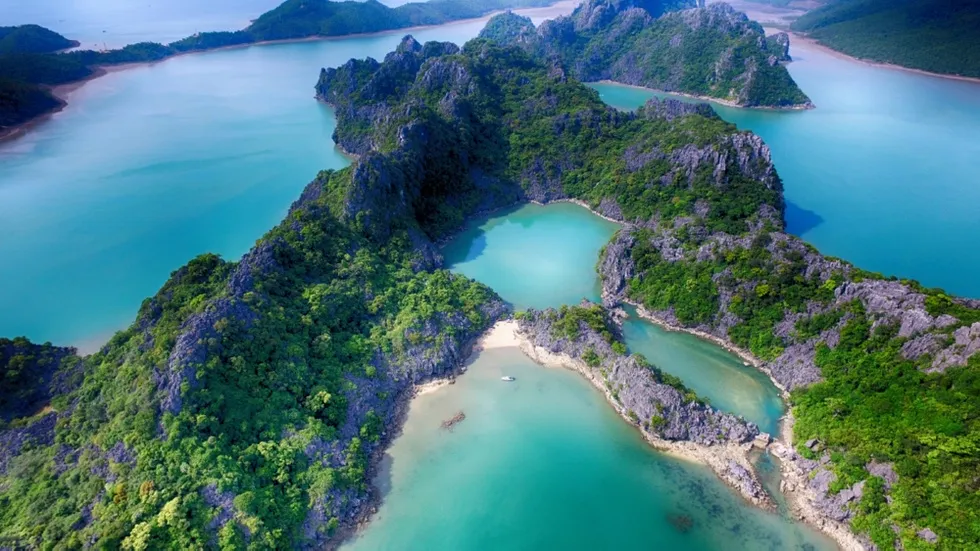
Bai Tu Long Bay - a lesser-known tourist attraction
Lan Ha Bay: Ba Trai Dao Beach, Cat Co Beach, Trung Trang, Cat Ba National Park, Viet Hai Village, fishing village
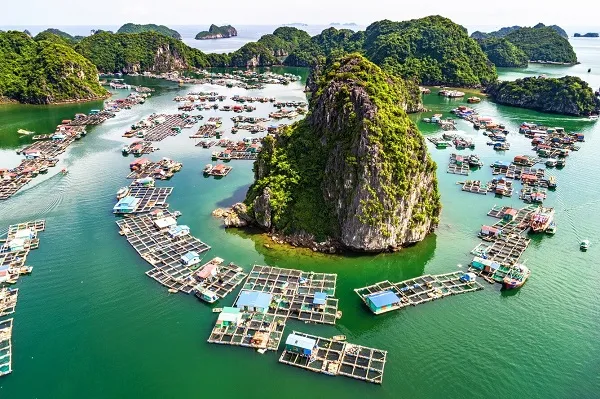
Lan Ha Bay - a natural tourist attraction
Tourist Places in Central Vietnam
9. Quang Binh
Quang Binh is located in central of Vietnam. Quang Binh came into prominence after the discovery of Son Doong Cave, the largest cave in the world. However, there is much more to see and do in this area than just Son Doong Cave.
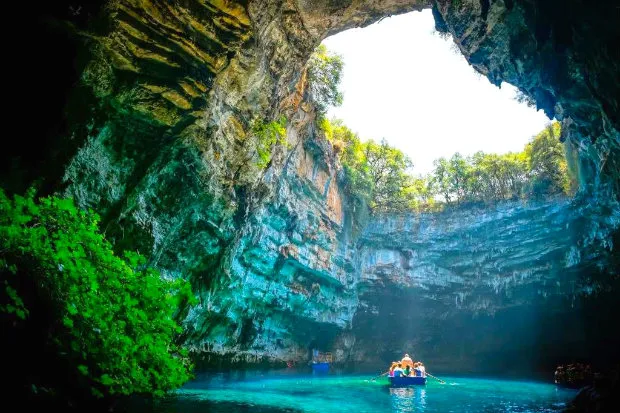
A majestic cave in Quang Binh
Why Quang Binh?
- The destination is an ideal place for your trip because it fully converges for the following reasons.
- Many wonderful attractions: Nature has given people and land a great favour: a cave system, going through many tectonic processes deep in the majestic limestone mountains, the turquoise creek, and also the charming Nhat Le beach. It is a great place for those who love to immerse themselves in nature.
- Different and interesting tourist activities: You always find the suitable activities in Quang Binh. There are easy trekking routes, boat trips to the more "energetic" things like zip lining, kayaking. Possibly, there are also trekking routes for professional explorers to Hang En, Son Doong, Tu Lan,... which combine long-distance forest trekking, cave swimming and camping.
When to go?
The dry season in Quang Binh starts from April to September. It's hot with quite strong sunshine, the average temperature is 36 - 37oC.
Where to go?
- Phong Nha - Ke Bang Phong National Park was recognized by UNESCO as a World Natural Heritage Site for its geological and geomorphological values in 2003, and on July 3, 2015 it continued to be recognized by UNESCO as a World Natural Heritage Site for the second time with the criteria of biodiversity. So far the park still remains mysterious with so many hidden places in the middle of the forest, however so far if you come to the area, you can visit:
- Phong Nha Cave
- Thien Duong Cave
- Hang En Cave
- Tien Son Cave
- Chay River - Dark Cave
- Nuoc Mooc Stream
- Tu Lan Cave
- Note: Son Doong Cave is the largest cave in the world which can hold a 40-story building. However it is not yet open for mass tourism.
>> See more: Phong Nha Travel Guide
10. Hue
Hue, famous for the Hue Imperial Citadel, served as the capital of Vietnam during the glorious Nguyen dynasties. Today, dozens of heritages are still preserved, reflecting Hue's rich culture.

Hue Imperial City - a popular tourist attraction
Why Hue?
- Unique Intact Relics of the Vietnamese Monarchy: Through so many historical changes, Hue still preserves very well hundreds of architecture and art works.
- Rich and Exquisite Cuisine: Hue's culinary culture attracts all visitors with its delicious taste and meticulous preparation.
- The Quiet Pace of Life: In the past, Hue was said to be very quiet and sad because of the very slow pace of life.
- Kind and hospitable people: In Hue, you can feel the local people's warmth and hospitality. In fact, the tranquillity and sweetness of Hue’s woman are the infinite source of inspiration in many works of poetry and music in Vietnam
When to go?
The best time to visit Hue is from January to September. January to April in Hue is spring, when you can feel comfortable because of the greatly reduced precipitation. The period from May to September falls in the dry period as the heat is really strong at noon.
Where to go?
- Forbidden Citadel
- The mausoleums of several kings, such as Minh Mang, Tu Duc, and Khai Dinh,...
- The quiet and charming handicraft villages: Phuoc Tich Ancient Village, Thuan Loc Embroidery Village, Phu Cam Hat Village, Hien Luong Smithing Village, Ke Mon Jewelry Village, My Xuyen Sculpture Village, Thanh Tien Paper Flower Village,...
>> See more: Hue Travel Guide
11. Da Nang
The next destination in the list of best tourist places in Vietnam is Da Nang. Da Nang is the largest economic, cultural, educational, scientific and technological centre of Central Vietnam. It is an ideal summer vacation destination with countless attractive tourist attractions, fresh seafood and convenient air routes, convenient and vibrant nightlife.
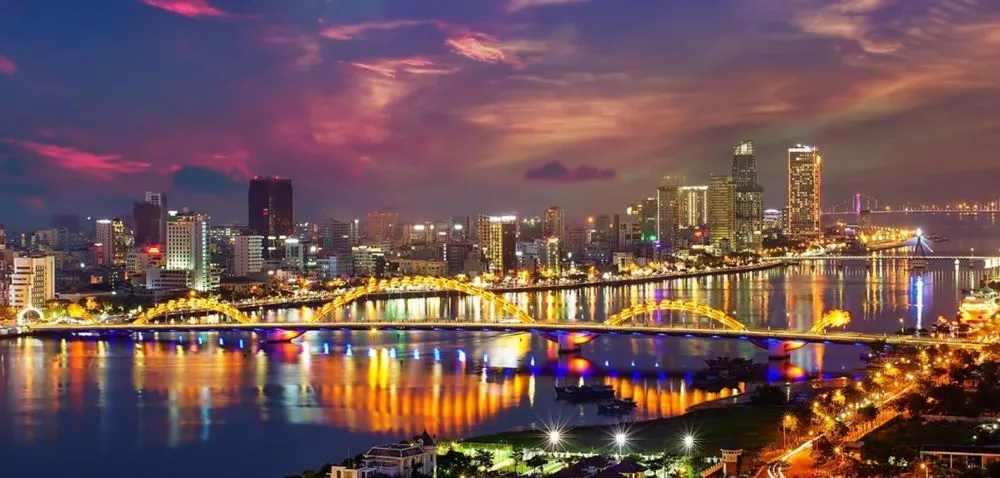
Da Nang Dragon Bridge - a popular tourist attraction
Why Da Nang?
- Wealth of tourism activities: Attaching importance to tourism development from the beginning, Da Nang offers many different activities for tourists to make the most of the beauty of this modern and friendly city such as seeing the peculiar bridges, attending the Fire Festival of 'artifice, having fun at Asia Park... Also, thanks to Mother Earth, Da Nang is granted both sea and mountain. Visitors can participate in both mountain and bathing activities such as climbing the mountain, admiring the city from the view, parasailing, and riding a jet ski on My Khe beach.
- Vibrant nightlife: You cannot say that you are already in Da Nang without an evening outing in this city. All the bridges are bright, the night restaurants, the night market with the cultural and musical activities that change very often, boat evening dragon shape on the Han River...
When to go?
Similar to Hue, the best time to visit this city is from January to September, when the weather is mild enough and less rain. However, from the end of April, the climate becomes more favourable for a seaside stay thanks to the fresh sea water..
Where to go?
- Ngu Hanh Son mountain
- Ba Na Hill: It is well-known for the Golden Hands Bridge.
- Linh Ung pagodas: in Da Nang there are 3 pagodas with the same name “Linh Ung”. The first and oldest pagoda is located in Ngu Hanh Son mountain, the second one in Ba Na mountain and last one in Son Tra peninsula.
- Bridges: In Da Nang there are many bridges and each has its unique architecture. The Han River Bridge is the first swing bridge designed and built by the Vietnamese. Tran Thi Ly bridge with the shape of a sail is the longest suspension bridge of Vietnam. Thuan Phuoc, the Dragon-shaped bridge, can sprinkle fire and water on the weekend. There is also a love bridge beside the Han River.
>> See more: Da Nang Travel Guide
12. Hoi An
Hoi An was one of the most flourishing trading ports in Asia from the 16th to the 19th century. It attracted many traders from all over the world, especially China, Japan, India,... In 1999, this town was recognized by UNESCO as a World Heritage.

Hoi An Ancient Town - a well-preserved living museum
Why Hoi An?
- A living museum of history and culture: If you come to the Old Town in Hoi An, you will see many well-preserved old yellow houses with brown tiled roofs of the time.
- Town of tailor-made dresses with short time processing: In the early 20th century, Hoi An was already the famous place for cloth and clothing shops such as men's suit, women's dress. Until 2005, in Hoi An, there were about 350 good tailors in Hoi An. To meet the need of tourism, they have created a way to make clothes in a short time - just a few hours or a day to fit the short stay of tourists in this country.
- Good food to discover: The cuisine is a strong point of Hoi An, which is a mix between Chinese and Vietnamese. You can taste the “cao lau”, “hoanh thanh", rose cake, and also the “banh mi” variations with the original taste of Hoi An.
- Interesting and budget seaside resort: in Hoi An there are many beautiful beaches such as An Bang, Ha My, Nam Hoi An. Extending your few days to relax on Hoi An beaches is always a good option.
When to go?
Except for November and December which are affected by storms, you can go to Hoi An at any other time of the year. However, if you also want to take advantage of the time in Hoi An to enjoy the sea, the recommended period is from April to the end of September.
Where to go?
- The historical centre.
- The surrounding handicraft villages: Tra Que Vegetable Village, Thanh Ha Terracotta Village, Cam Thanh Palm Village, Kim Bong Wooden Village.
- My Son Sanctuary: Travelling to the Shrine of My Son, visitors can admire the architectural structures of the Champa culture.
>> See more: Hoi An Travel Guide
13. West Central Highland (Tay Nguyen)
The Central Highlands have long become a favourite tourist destination for travellers who are passionate about discovering new lands. In Central Highlands, you will marvel at the beauty of majestic waterfalls, high mountains or vast green forests.
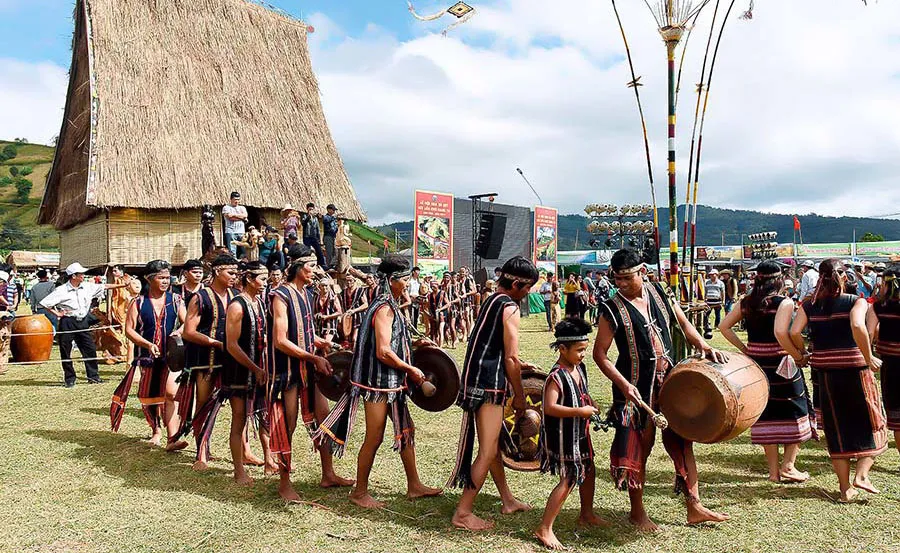
Gong Culture - a unique art form
Why West Central Highlands?
- Wilderness: Tay Nguyen has a green scenery of coffee hills, clear blue lakes, vast primaeval forests, and hidden majestic waterfalls.
- Region of Ethnic Tribes: The Central Highlands region is the home of statistically 54 ethnic groups from the entire country. It is the region with the largest number of ethnic groups in Vietnam, and it is also the only place where all linguistic groups of Vietnam coexist, of which the local ethnic minorities (EM) live together: Ba Na, MNong, Xo Dang, Co Ho, Roman, E De and Gia Rai,...
- In the area, there is an intangible cultural heritage recognized by Unesco: Gong culture space that is preserved in 5 provinces Kon Tum, Gia Lai, Dak Lak, Dak Nong and Lam Dong. Gong culture plays an important role in the spiritual life of ethnic minorities and locals.
When to go?
The dry season is from late November to April next year, so it is the best time to visit the Central Plateau. This is also the time when unique cultural festivals happen.
Where to go?
- Lake Lak
- Eye of Pleiku - Lake T'Nung
- Ta Dung Nature Reserve
- Lang Biang Plateau
- The waterfalls
- Yok Don National Park
- The village cafe at Tay Nguyen
- Ethnic villages
See more: A Comprehensive Dak Lak Travel Guide
Tourist Places in Southern Vietnam
14. Ho Chi Minh City
Sai Gon is the old name of Ho Chi Minh City, which was renamed in 1975 to commemorate the great first president of the country. Now Saigon is the most important city and economic centre in Southern Vietnam.
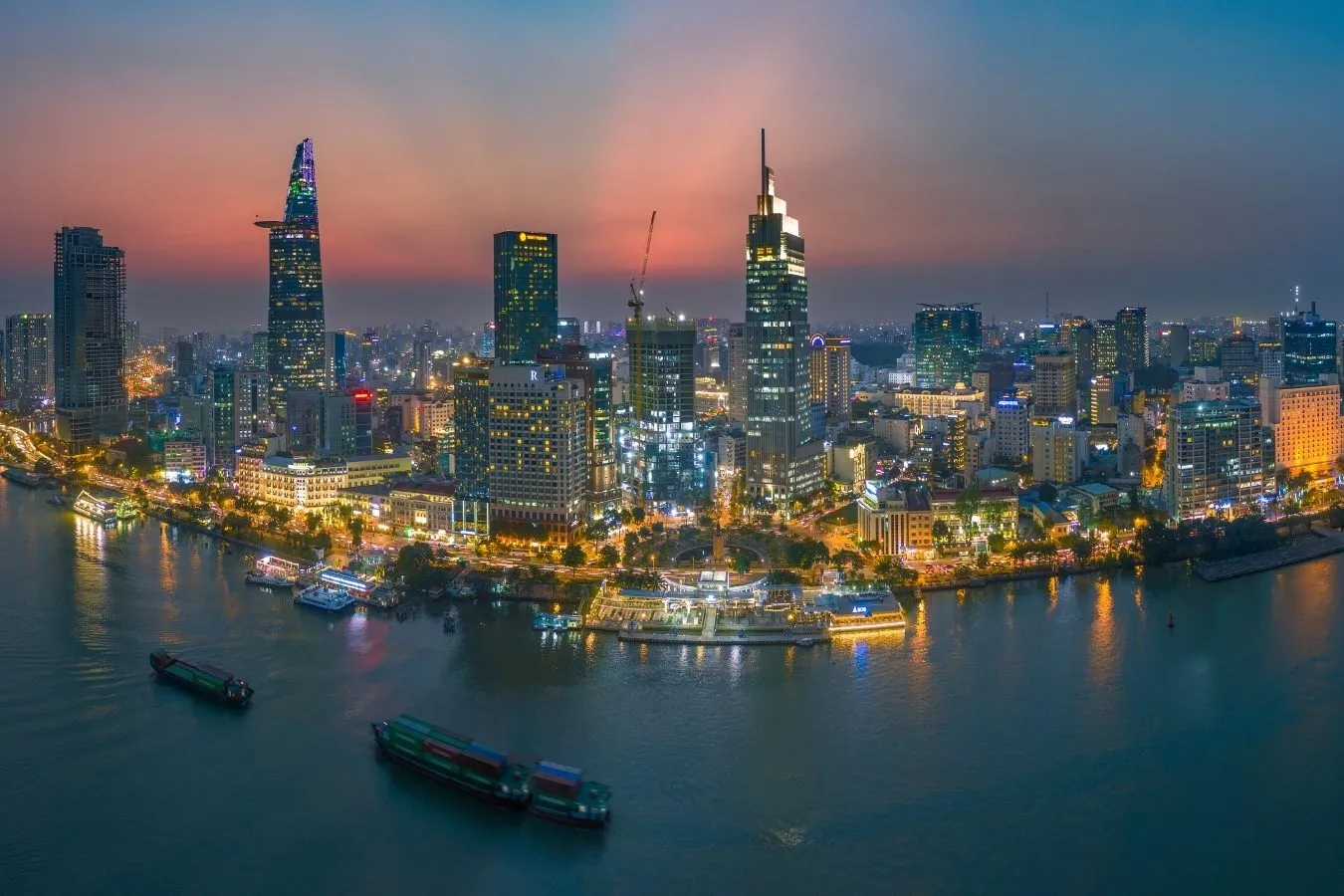
Ho Chi Minh City - a dynamic land for everyone
Why Ho Chi Minh City?
- Historical Monuments: Saigon is known as the pearl of the orient with its elegant and dynamic beauty. The architectural works of Saigon, even if they are not as old as those of Hanoi, are the signs of a historic period of the country.
- The city that never sleeps: The dynamic life in Sai Gon makes us feel that this city does not have a minute of rest.
- Excellent services: People who work in the service industry will satisfy you with their concern, sweet words and friendly smiles.
- Diversity of cuisine: Sai Gon is not only rich in traditional dishes like other countries but also from Western cuisine, from fancy dishes to simple street food, from popular restaurants to bizarre restaurants.
When to go?
In Sai Gon you can visit almost all year round.
Where to go?
- Historical monuments: Reunification Palace, Nha Rong Port, Central Post Office, Sai Gon Cathedral, Ben Thanh Market, Grand Opera.
- Museums: War Museum, Ao Dai Museum, Hidden Weapons Museum, Fito Museum (Vietnam Traditional Medicines Museum)
- The Chinatown (Cho Lon): The area has religious monuments of Chinese culture such as Ngoc Hoang pagoda, Thien Hau temple.
- The Cu Chi tunnels: an underground accommodation of the Vietnamese army in the war against the Americans.
See more: Ho Chi Minh Travel Guide
15. Mekong River Delta
Mekong River Delta is the southernmost area of Vietnam where nature bestows the abundant resources, temperate climate, charming riverside combined with the unique cultural quintessence of the community of 4 ethnic groups including Kinh - Hoa - Cham - Khmer.
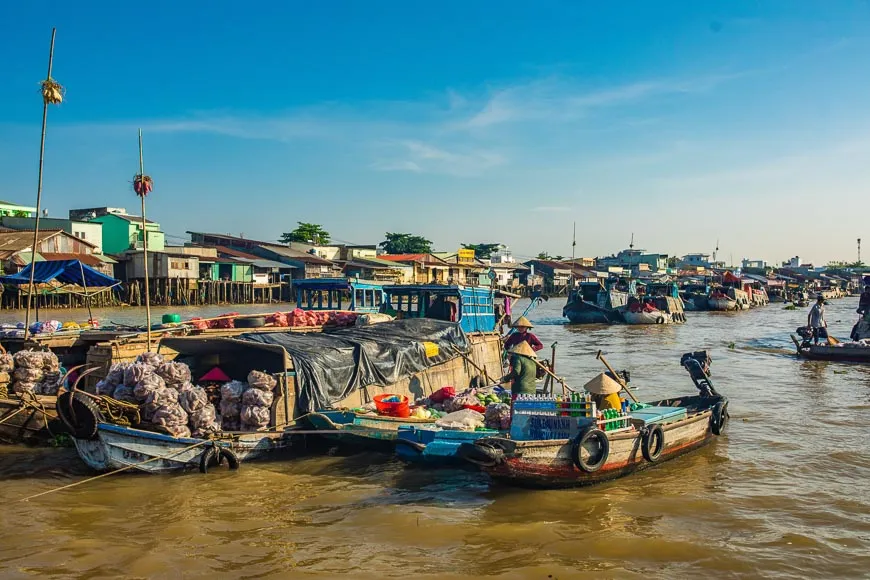
Traditional floating market in the Mekong Delta, which appears in many films
Why the Mekong River Delta?
- Beauty in harmony between life and rivers: Mekong River Delta area in Vietnam has more than 280,000 km of rivers and canals that are like rows of silk woven among the vast green carpets of four-season orchards, fields of flying storks ... Many people believe that in this region, wherever they go, they will encounter rivers. The life of the local people here is totally attached to the rivers, they recognize themselves in the local specialties, in the songs and in the daily habits.
- The diversity of culture: The Mekong Delta still retains the beauty of many Kinh - Hoa - Cham and Khmer cultures. Most of the people living in the area are Vietnamese- ethnic Kinh and Khmer - Khmer Krom by the way to call Cambodians while a small number of Cham also live near the Cambodian border. These Cham people, unlike those in other areas, don't patronize Hinduism, but Muslimism and don't really mix with each other. The cultural diversity of the area makes this place appear many different religions: Buddhism, Catholicism, Caodaism and Islam. Tourists visiting the southwestern land will have the opportunity to experience the cultural diversity and hospitality of the people here.
When to go?
You can go to the Mekong Delta almost all year round. In the dry season from November to April, the rainfall is less so tourists can have a really pleasant trip. In the rainy season from May to October, you can easily experience boat rides through the canals and taste the tropical summer fruits.
Where to go?
- Ben Tre: Interlaced channels
- Cai Be: Cai Be has the colourful orchards
- Can Tho: lively floating markets, Bang Lang stork garden
- Long Xuyen: the local floating market, islets in the middle of the river
- Chau Doc: Sam Mountain, Ba Chua Xu temple, Hang Pagoda, Tra Su Cajuput Forest
See more: Mekong Delta Travel Guide
Above we have introduced you to the the 15 best Vietnam tourist places in mainland. For beach lovers, you can extend your holiday in Con Dao Island or Phu Quoc Island. Hope that with the information you can plan a trip to experience our country’s cultural and natural beauty.
See more:








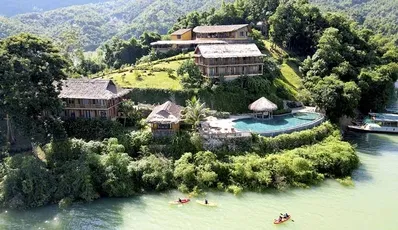
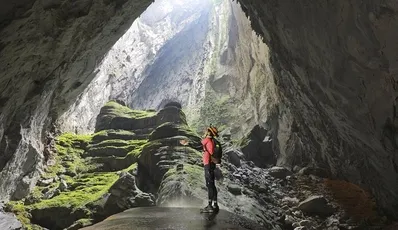
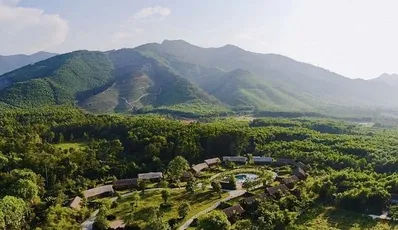
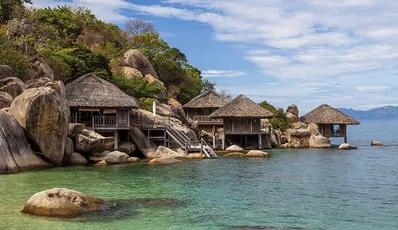
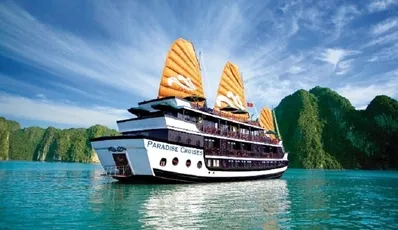





 TRAVELERS' CHOICE 2026
TRAVELERS' CHOICE 2026 


